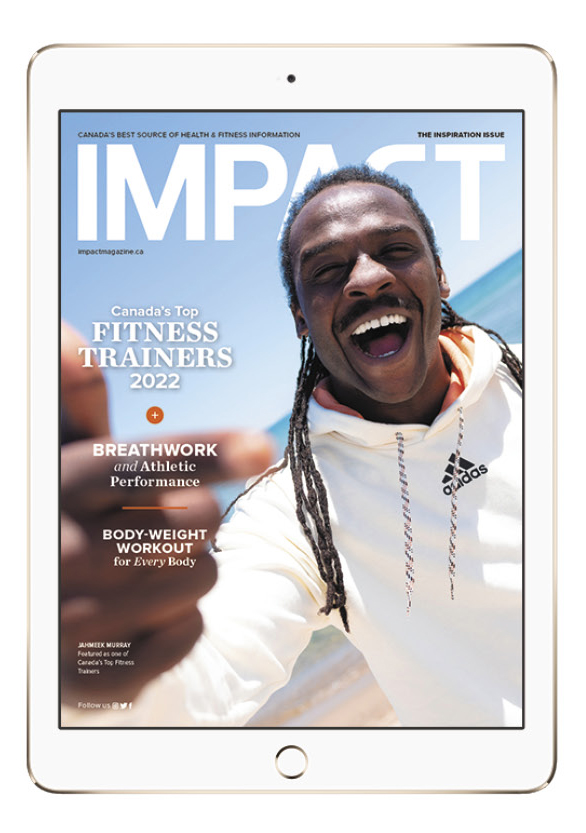Richie Bostock hasn’t always been a globetrotting teacher of breathwork.
After his father was diagnosed with Multiple Sclerosis (MS), an autoimmune disease with no widely accepted cure, he was constantly on the lookout for lifestyle changes and alternative treatments that could be useful for his dad.
Bostock eventually came across Wim Hof, a Dutch man commonly known as The Iceman, during a podcast. Hof spoke about a method he developed and it caught Bostock’s attention. “The method seemed to be really effective in helping people with autoimmune diseases, including MS,” says Bostock. He did some more research and discovered there were two main elements to Hof’s method: cold exposure and breathing techniques.
Bostock decided to learn Hof’s method during a week-long training session and shared it with his dad whose MS has not progressed since incorporating the breathing techniques and cold showers espoused by Hof into his daily routine.
Bostock became “obsessed” with finding out what else people were doing using breath. He has since travelled across the world to learn from modern breathing masters.
IMPACT caught up with Bostock to learn more about the breathwork he teaches around the world.
Why is how we breathe important?
The way you breathe affects just about every system in your body, such as your cardiovascular system, endocrine system, digestive system, nervous system and immune system. Because we have conscious control over our breath, by simply learning how to use your breath as a tool (the way nature intended you to), you can quickly affect the systems and functions in your body, improving your physical and mental health and performance and emotional wellbeing. Think of your breath as your body’s built-in Swiss Army knife that, when you know how to use it purposefully, can, within minutes, help you to reduce stress and anxiety, increase energy levels, re-balance hormones, heighten focus and concentration, improve sleep and digestion, heal emotional trauma, alleviate chronic pain and improve cardiovascular health and even improve athletic performance.
For our sport readers, how does breath affect physical/athletic performance?
Oxygen is the primary fuel that our cells need to create energy for our bodies to function and to move. Therefore, placing your breathing at the very front of your mind during athletic endeavours is crucial to ensure that you are maximizing your body’s ability for athletic output. There are many different techniques and frameworks for breathing before, during and after your athletic performance to make sure that you prepare, perform and recover at your best.
“What I would say for someone just beginning is that the best place to start is to begin to notice how you breathe day-to-day”
How often should one practise a breathing routine and how long should each session be?
I define breathwork as anytime you intentionally become aware of your breath and use it to improve your physical and mental health and performance and emotional well-being. It can be as simple as learning how to breathe more optimally day-to-day, learning quick and easy techniques that can quickly change your state or mood to deeper practices that can be used as an incredible form of emotional therapy. So it really depends on what you want to try to achieve as a breathing “session” can last anywhere between one minute to three hours.
What I would say for someone just beginning is that the best place to start is to begin to notice how you breathe day-to-day. Most people average 19,000 to 27,000 breaths a day. However most people are not aware that they are breathing poorly and fewer are aware about how poor breathing habits may be affecting their health and happiness. The most frequent dysfunctional breathing pattern I see is a chest or clavicular breathing pattern which is very common in people who are chronically stressed. This pattern is obvious when a person inhales and their shoulders travel vertically significantly and their chest puffs out. Here you are using your neck, shoulders and upper chest muscles to expand your chest to breathe in air. These muscles are what are called “secondary breathing muscles” and are designed to be used in short bursts when we need to breathe quickly (e.g. catching our breath after sprinting). They are not designed to be used 24/7 and will fatigue and can cause neck, shoulder and back pain. On top of that, this style of breathing is neurologically linked to sending the body into a stress response by activating your sympathetic nervous system, so even if you had no reason to be stressed, breathing in this way would cause your body to go into a stress response – doesn’t sound so smart does it?
When it comes to correct breathing, the only place to start is with your diaphragm. This most important muscle in the movement of breathing is fibrous and parachute-shaped. It separates your thoracic cavity – the space your heart and lungs occupy – from the abdominal cavity, where your digestive organs live. It attaches to your spine, the lower ribs and the bottom of your sternum. As you inhale, your diaphragm contracts and descends, pulling air into the lowest parts of your lungs. As the diaphragm descends, your organs underneath are pushed to the front, back and sides. This causes your abdomen to expand, giving the appearance of breathing into the stomach, which is why diaphragmatic breathing is often referred to as belly breathing. As you exhale, your diaphragm relaxes and ascends, forcing the inhaled air out of your lungs.
Here is a simple technique that will help you to learn to breathe diaphragmatically. The slow cadence of breathing for a few minutes will also help to shift your body into your parasympathetic (also known as ‘rest and digest’) response, promoting functions such as digestion, helping you sleep better and to feel more calm. The technique is called coherence breathing. Research on this technique has shown how breathing at a rate of five to six breaths per minute can help you to balance your nervous system in just a matter of minutes.
• Place your hands on the bottom of your ribcage ( just like when you put your hands on your hips but instead resting on the bottom of your ribs)
• Inhale through your nose for five seconds, keeping your neck and shoulders relaxed and relatively still and feeling an expansion through your mid/lower ribs and abdomen.
• Exhale through your nose for five seconds.
• Repeat this cycle for at least three minutes, but there really is no limit as to how long you can go.
• If five seconds feels like a struggle, reduce it to four seconds and get comfortable breathing at that rate first. You can then gradually build it up to five or even six seconds.
Tell us about ‘the sigh’ and what is happening physically and mentally?
Research has shown that sighing acts as a physical, mental and emotional reset. Physically, a sigh is a break of the constant pattern of breathing that helps to reset your respiratory system. It is defined as an inhale that is twice as large as normal, therefore stretching the alveoli (the air sacs in your lungs) and giving you a sense of comfort and relief, hence the common term “a sigh of relief.”
What are the emotional and mental benefits of breathwork?
Our breath is so intimately linked to our nervous system that it unconsciously changes depending on the state of
our nervous system, which we usually experience as emotion. We can also use our breathing to be able to change how our nervous system is functioning, therefore changing how we think and how we feel. As an example, if we are feeling stressed or anxious, we can breathe in certain ways to soothe our nervous system to feel more calm and relaxed. Additionally, one of the very exciting possibilities of breathwork is how certain styles of breathing can be used as an incredible form of therapy. I have had clients say that a single 90-minute session of this style of breathwork is equivalent to six months of talking therapy.
BREATHING FOR ENERGY
I call this one The Energizer Bunny. The next time you are itching for that late afternoon coffee, save yourself the money and just breathe, it’s free!
This breath can be done seated or standing:
• Exhale completely.
• Take three quick and powerful inhales through the nose, progressively filling up your lungs more and more (The length of the inhales are equal and on your final inhale your lungs should be completely full of air).
• Exhale with a big sigh through your mouth.
• That completes one breath cycle. Aim to complete 36 breath cycles per minute, so each breath takes a little under two seconds to complete.
• Repeat this pattern for one minute and notice the difference in how you feel!
This breath may make you start to feel a little light-headed. This is completely normal so don’t stress, everything returns back to normal within a matter of seconds of finishing the breathing except that you will now feel far more energized.
BREATHING TO DECREASE STRESS
This breath calms down the nervous system in times of stress. I call this technique 5pm Breathing because 5 p.m. is supposed to be that joyous moment where most of us get to knock off work, relax, let our hair down and have a cocktail. It also stands for five breaths per minute and is designed to help you wind down and de-stress your internal systems.
Start in a seated or lying position:
• To start, put one or both hands over your belly button so that you can feel the movement of your abdomen.
• Inhale for four seconds through your nose and feel your hands rise or move outwards a few centimetres.
• Exhale for six seconds through your nose and feel your hands fall inwards a few centimetres. No need to empty your lungs all the way, just exhale slowly until your lungs feel comfortably empty.
• Hold your breath for two seconds.
• That is one breath cycle. Repeat this breath cycle at least ten times, however you can keep repeating it until you have reached your desired state of relaxation.
You may also like: Nasal Breathing for Performance

Read This Story in Our 2022 Inspiration Digital Edition
Read about Canada’s Top Fitness Trainers 2022. Need new ideas for your next workout. Test your fitness levels and see how you measure up. World-renowned breath expert, Richie Bostock shows us how to breathe correctly, 7 yoga poses for a better sleep, recipes and much more!
















